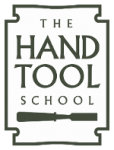Saw Length and Choose Your Hand Plane by Function
26" Hand Saws Are One Size Fits All
The Disston Company made millions of saws and of the handsaws they made a sizable percentage of them were 26" saws. That is because this is the optimal saw length for the human body. Regardless of your height or arm length, this size just works. The old adage that your optimal saw stroke can be measured from your fist to your armpit is most often inaccurate because the entire saw is not used in the typical saw stroke. We need a bit of extra at the toe to prevent from pulling the saw out of the kerf. Likewise at the heel there are several inches of teeth there that don't get used because of the overlap of the saw handle. Of the many types of hand saws out there of various lengths, the 26" is the one that provides the most efficient cutting because it puts the most teeth to work over the distance of the typical human arm movement.
Another point to consider is that when one steps down to a shorter hand saw, the pitch of the teeth often changes as well to a finer tooth and cleaner cut for more precise work. This is where the typical panel saw or "toolbox saw" comes into play. These are highly effective saws with shorter plates of 18-24" long but also commonly 8-12 ppi pitch. This makes for inefficient sawing for breaking down rough boards or any lumber thicker than about 7/8". So be careful choosing a saw shorter than 26" as you will mostly likely be working less efficiently, no matter how tall or short you may be.
Using Hand Planes Based on Function
Stanley provided helpful numbers to identify their different planes. Then colloquial names were thrown in like "smoothing plane", "jack plane", or "fore plane" to help us identify what we might use those numbered planes for. The fact is the colloquial names go way back before Stanley hand planes because in the end, the woodworker chooses which plane to use based on the task at hand and what is most important to that task. Smoothing for instance is that last step before finish where the appearance of the surface is the most important element. Here a shorter plane can navigate any hills and valleys to clean up tear out and flatness isn't important. But the length of the plane sole can also be dictated by the length of the board to be planed. So automatically jumping to a #4 smoothing plane for an 6" long box part doesn't make sense when a #2 would do a more efficient job. Likewise, when flatness is imperative using a 36" jointer plane on an 18" long board is like taking a Bazooka to a knife fight. It will certainly get the job done but its overkill.
So the lesson here is not to get caught up in the naming conventions. I MUST use a Fore plane for heavy thickness work on rough sawn stock or I must NOT use a Smoothing plane to joint a board. Choose the plane for the job based on the size of the task at hand. Of course this means that you will end up with more hand planes in your tool cabinet to allow you to adapt to different conditions more readily. But you all know you wanted an excuse to get some more hand planes anyway, don't deny it.



